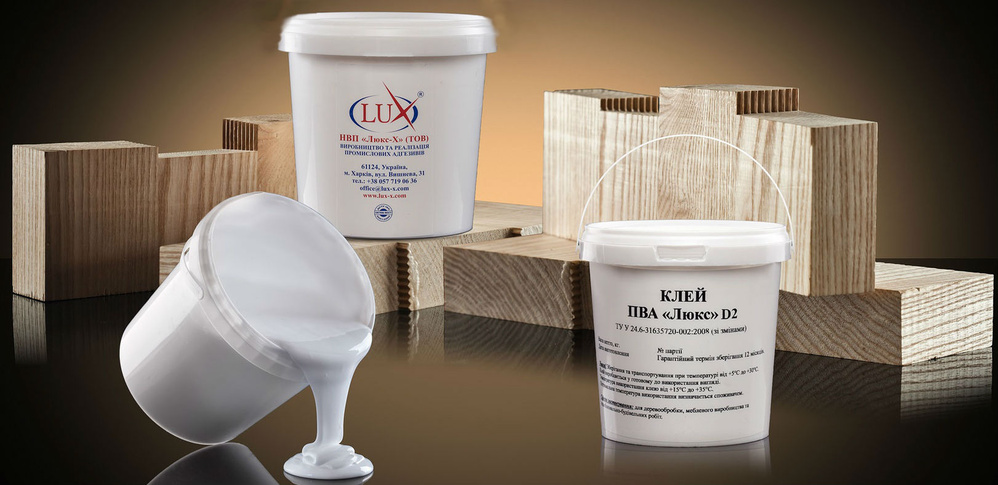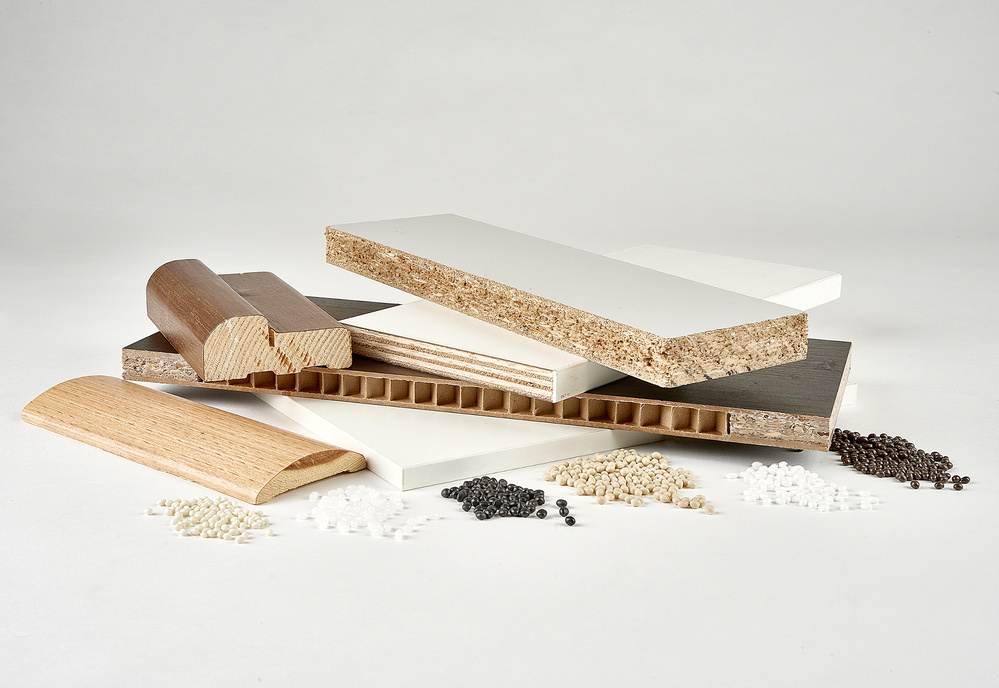Top 5 Best Wood Adhesives. Types and Advantages
- Main types of Lux-X wood glue and their characteristics
- What kinds of adhesives can be used for wood?
- Rating of best adhesives for joining wood
- Why is PVAс adhesive the best for joining wood?
- Advantages of hot melt BeardowAdams adhesives
- How to choose a wood adhesive?
Wood is the most in-demand material in the furniture industry. Wooden articles in the modern world enjoy huge success due to their environmental friendliness, aesthetic appearance, high durability and safe usage. The functionality and neatness of products made of natural materials make any interior comfortable and cosy. For wooden furniture to be not only nice in appearance, but also to be of good quality and last long, the industry uses special adhesives.
As new brands are constantly appearing and chemical glue formulations are being improved, not only ordinary people but professionals often arise a question: which wood glue is best suited for efficient bonding of substrates? To find out what types of glue with their basic characteristics and properties exist, we have prepared this article.
Many representatives of manufacturing companies or private individuals prefer buying foreign goods, since they believe that their quality is much higher than that of similar products of Ukrainian origin. We decided to dispel this myth and prove that the domestic manufacturer can fully satisfy all modern inquiries regarding the quality of glue. Lux-X has been producing high-quality dispersion adhesives for 20 years, which are in demand both among the largest companies in Ukraine and abroad.
Main types of Lux-X wood glue and their characteristics
You can find two main types of adhesives for furniture and woodworking on our website:
PVA is the most popular among types of wood glues and bonding wooden parts when assembling furniture. Polyvinyl acetate (PVA) is known to every single person since school, since it was often used for gluing paper products. The company "Lux" produces a line of glue based on PVA: PVA "Lux", PVA "Lux" D2, PVA "Lux" D3 and its modifications, as well as dispersion PVA. In wood processing, waterproof adhesives are most often used. The most popular is PVA "Lux" D3. This group of glues is used in the manufacture of kitchen furniture, wooden floors, stairs, splicing timber for windows, etc. PVA "Lux" has successfully proved itself in many enterprises, since they are made of high quality raw materials, including European production, their quality are confirmed by domestic and foreign certificates according to EN 204/205: 2001 on water resistance and adhesive strength.
Hot melt is also a very popular adhesive for woodworking and furniture production for gluing edges, wrapping postforming, etc. Advantages of hot melt adhesives are as follows: easy application, fast setting speed and good level of adhesion. "Lux-X" provides a hotmelt adhesive of English producer "BeardowAdams" as ТМ ВАМ and BAMFutura, which does not form a deposit when working on equipment, has no smell, does not pull threads and does not smear.
When hot melt adhesives are produced, the quality is checked at every stage of its manufacturing, so that you can use it for your purposes with maximum efficiency.

What kinds of adhesives can be used for wood?
Every year, the market of wood adhesives sees new groups of industrial adhesives. The most in-demand ones are as follows:
- PVAс adhesive
- Hot adhesive or hot melt glue
- Polyurethane adhesive
- Joiner’s glue
- Epoxy adhesive.
PVAс adhesive is used widely in the woodworking industry and furniture industries. This adhesive is used for working with chipboard and fibreboard, as well as for making furniture. PVAс adhesive has an excellent formula. Hence, it is used for working both indoors and outdoors where a product is exposed to weather conditions.
Hot adhesive or hot melt glue can join many surfaces, among which are different kinds of wooden materials. Hot adhesive is most popular for making furniture and doors: attaching banding, enveloping, veneering, and so forth. Hot adhesive reliably bonds sophistic materials and has excellent performance characteristics.
Polyurethane adhesive is distinguished by high strength and is resistant to moisture, solar radiation, temperature variations and other adverse environmental factors. The bonded parts can be subjected to static and dynamic loads, with the adhesive-bonded joint keeping its structure and durability intact. Polyurethane adhesive is in widespread use in construction and repair work. Typically, cold polyurethane adhesive is used in such activities. It is well suited for laying wooden facing tiles and parquet floors. As a hot adhesive, polyurethane adhesive is used for bonding furniture edge bands because it ensures a very reliable adhesive joint. Though it has essential advantages, a drawback of polyurethane adhesive is its high price.
Joiner’s glue is suitable for bonding wooden planks, bars, plywood and chipboard. This glue is safe in practice because it is produced from natural components. Depending on the glue base, the market offers the following glue varieties: hide glue, fish glue, and bone glue. All these groups of joiner’s glue ensure good joining of wooden surfaces and they are affordably priced. The main drawback is a very sharp and caustic odour.
Epoxy adhesive is represented as a mix of epoxy resin and additional components: hardeners, solvents, fillers and plasticisers. This adhesive is used in the construction industry and for furniture remodelling. The adhesive has extraordinary adhesion properties, resists contraction and cracking, and it is also fairly frost and heat-resistant. Epoxy adhesive drawbacks are as follows: very high setting rate and the need to observe extreme safety precautions.
Rating of best adhesives for joining wood
For the manufacturers of the woodworking and furniture industries to be confident in choosing a quality industrial adhesive, we offer a rating of wood adhesives best for usage.
- PVAс adhesive
- Hot adhesive or hot melt glue
- Polyurethane adhesive
- Joiner’s glue
- Epoxy adhesive
These kinds of adhesives are used most often when working with wood. But the most popular industrial adhesive is still the PVAC adhesive.

Why is PVAс adhesive the best for joining wood?
PVAс adhesive has the following advantages:
- After drying it becomes transparent
- Dries fast
- Has high strength
- Is general-purpose
- Applies easily onto a surface
- Cheaper than other adhesives
- Not toxic
- Long shelf life
With account of the conditions and operational specifics of each enterprise, SPE LUX-X offers a large variety of cold PVAс wood adhesives. The following kinds of PVAC adhesives are best for joining wood:
- PVAс adhesive LUX
- PVAc adhesive LUX D3;
- PVAc adhesive LUX L-D3;
- PVAc adhesive LUX D2;
- PVAc dispersion
Manufacturers in the furniture and woodworking industries prefer to use PVAc adhesives with water-resistance class D2-D4.
Adhesive class D2 is used indoors under conditions of periodic action of water provided the wood moisture level remains within 18%. Group D3 adhesives can be used both indoors and outdoors where a product can be exposed to prolonged weather conditions. LUX-X specialists recommend to always stir PVAc adhesives prior to using them.
Basic characteristics of PVAc adhesive LUX for woodworking:
- Visually, the adhesive is a white liquid that is transparent after it has dried.
- Recommended temperature for working with PVAc LUX adhesive: +15 to +35 °С.
- Wide range of adhesive viscosity, 10 to 110 Pa*s, depending on the kind of adhesive.
- PVAc adhesive is applied by any convenient method: using a machine or by hand.
- The advantage of this adhesive is absolute safety and environmental friendliness because the adhesive is produced of high-quality European raw materials according to international standards.
Besides, for working with furniture, it is recommended to use the BeardowAdams brand hot adhesive.
Advantages of hot melt BeardowAdams adhesives
The hot melt adhesives that the LUX-Х company sells are produced in compliance with international requirements and have the following advantages:
- Very sticky.
- Low consumption.
- Uniform application onto a surface without formation of strings and bleeds.
- High resistance to external factors.
- Not toxic.
- A variety of colours.

How to choose a wood adhesive?
When choosing a PVAc adhesive, pay attention to the adhesive’s sensory characteristics, such as odour, homogeneous structure, as well as transparency of the glue film after the adhesive has dried. Prior to purchasing an adhesive, SPE LUX-X recommends to run tests at the customer’s enterprise because the adhesive should be suitable for the type of equipment, the work speed, the adhesive application unit, the colour of the manufactured products, and also meet other requirements.
When purchasing Lux brand adhesives, the company’s specialists guarantee technological and information support, and also send their production engineers to conduct tests.
If you need a quality wood adhesive, it is best to contact SPE LUX-Х LLC. LUX-X specialists are customer-oriented. Hence, all enquiries and preferences will be taken into account based on the customer’s enterprise profile and specific product.
If the orders for cold water-soluble Lux brand adhesives and BAM brand hot melt adhesives are in industrial-scale volume, delivery is free-of-charge. With smaller order quantities, delivery is paid according to carrier service rates.
You can order an adhesive and get advice on the SPE LUX-Х company website by the telephone numbers indicated or via the “Contact us” button.
Find more information on hot adhesives for furniture making here, and on PVAc for woodworking here.






